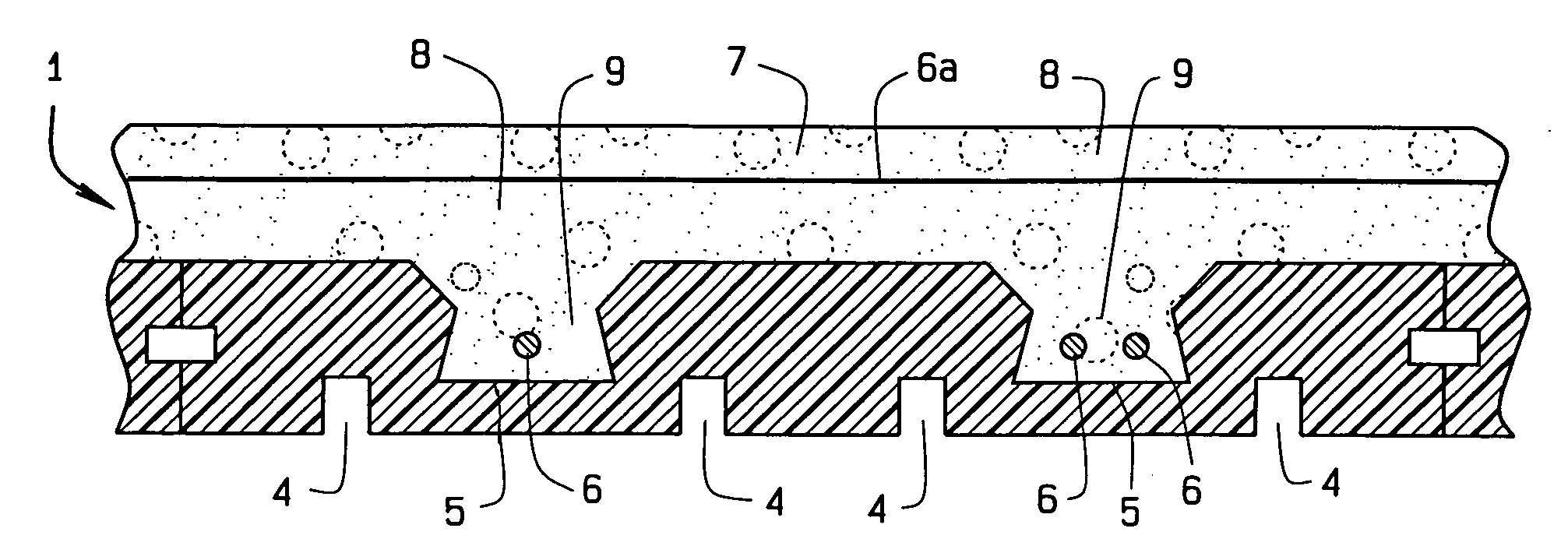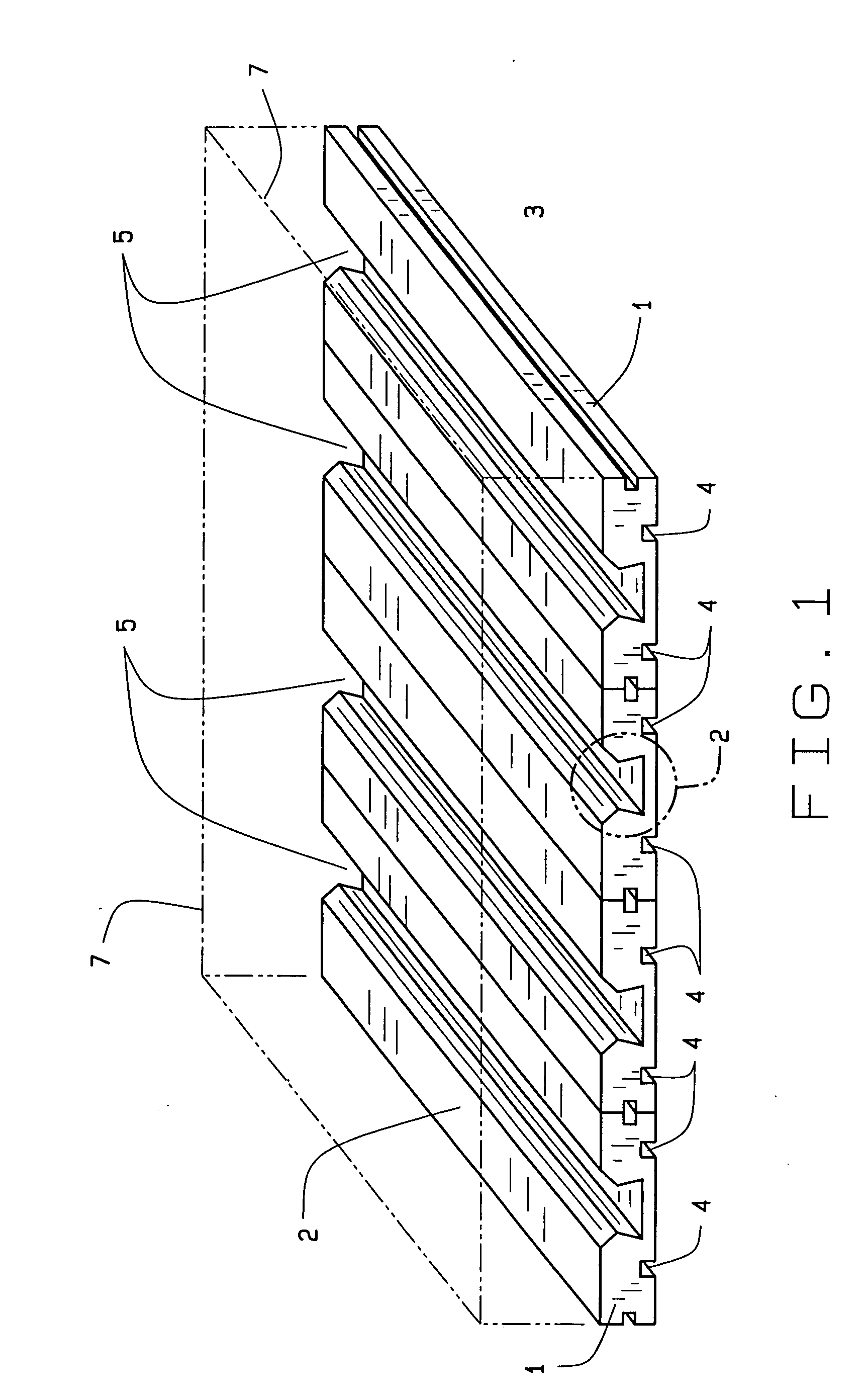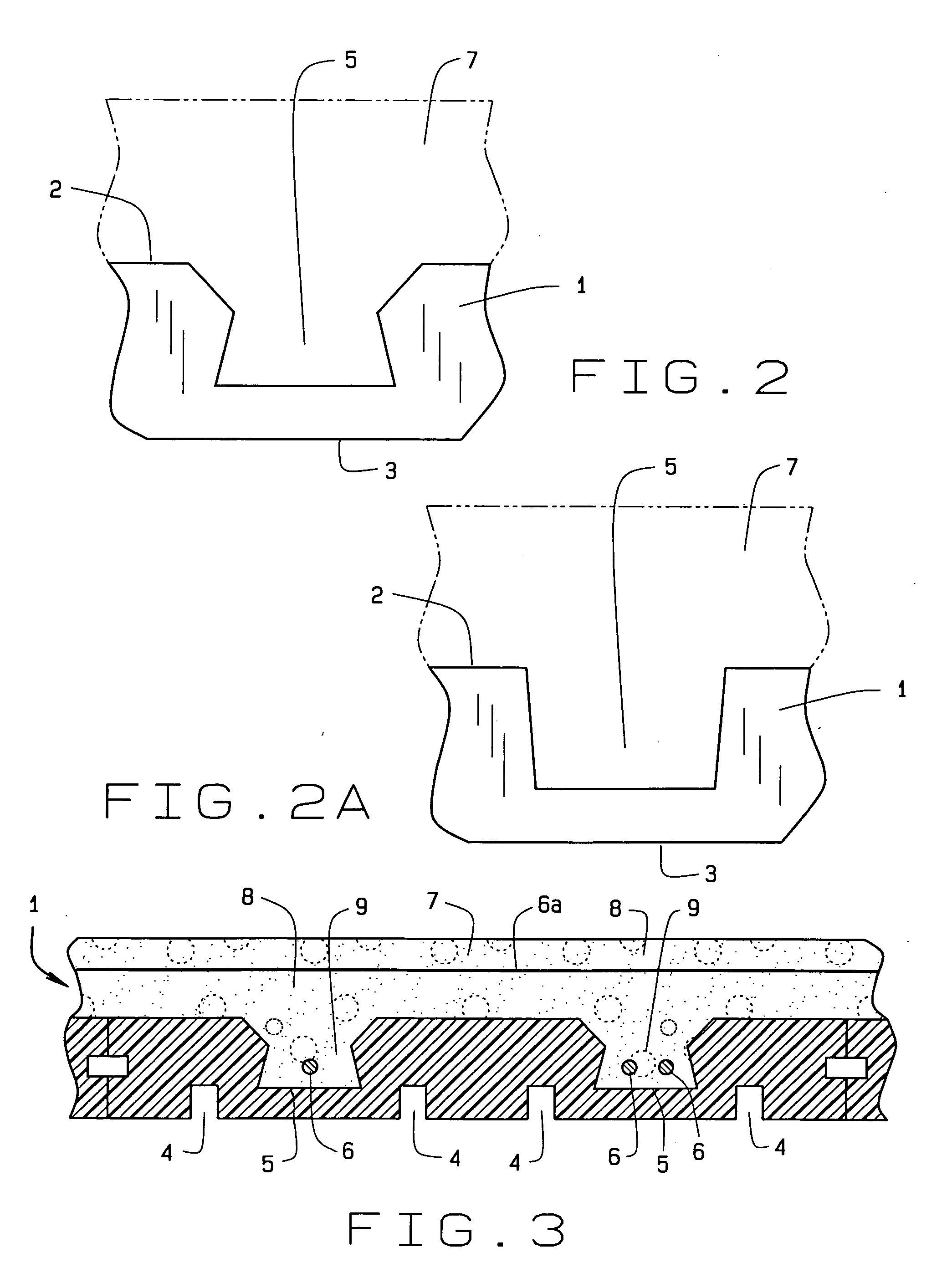Multiple layer polymer foam and concrete system for forming concrete walls, panels, floors, and decks
a foam and concrete technology, applied in the field of concrete forming systems, can solve the problems of high labor costs for steel installation, heavy concrete panels of full thickness, and high labor costs for cranes to install heavy panels
- Summary
- Abstract
- Description
- Claims
- Application Information
AI Technical Summary
Benefits of technology
Problems solved by technology
Method used
Image
Examples
Embodiment Construction
[0061]The present art overcomes the prior art limitations by providing multiple layers of polymer foam for forming concrete into a panel. Turning to FIG. 1, the present invention 1 appears as a panel of polymer foam, preferably polystyrene slab of one and a half pounds (1½ lb.), more or less, per square foot density expanded polystyrene insulation, commonly called EPS. The panel 1 has a rectangular shape with two mutually parallel and spaced apart longitudinal edges 1a, and two mutually parallel and spaced apart lateral edges 1b, perpendicular to the longitudinal edges. The panel has an exterior surface 2 shown here in FIG. 1. A lift of concrete 7 is placed upon the exterior surface 2 at an engineered thickness, here shown in phantom line.
[0062]Upon the exterior surface, the panel 1 has a plurality of channels 5 formed across the length of the panel. The channels 5 are parallel to the lateral edges of the panel and spaced apart at a regular interval. In the preferred embodiment, the...
PUM
 Login to View More
Login to View More Abstract
Description
Claims
Application Information
 Login to View More
Login to View More - R&D
- Intellectual Property
- Life Sciences
- Materials
- Tech Scout
- Unparalleled Data Quality
- Higher Quality Content
- 60% Fewer Hallucinations
Browse by: Latest US Patents, China's latest patents, Technical Efficacy Thesaurus, Application Domain, Technology Topic, Popular Technical Reports.
© 2025 PatSnap. All rights reserved.Legal|Privacy policy|Modern Slavery Act Transparency Statement|Sitemap|About US| Contact US: help@patsnap.com



